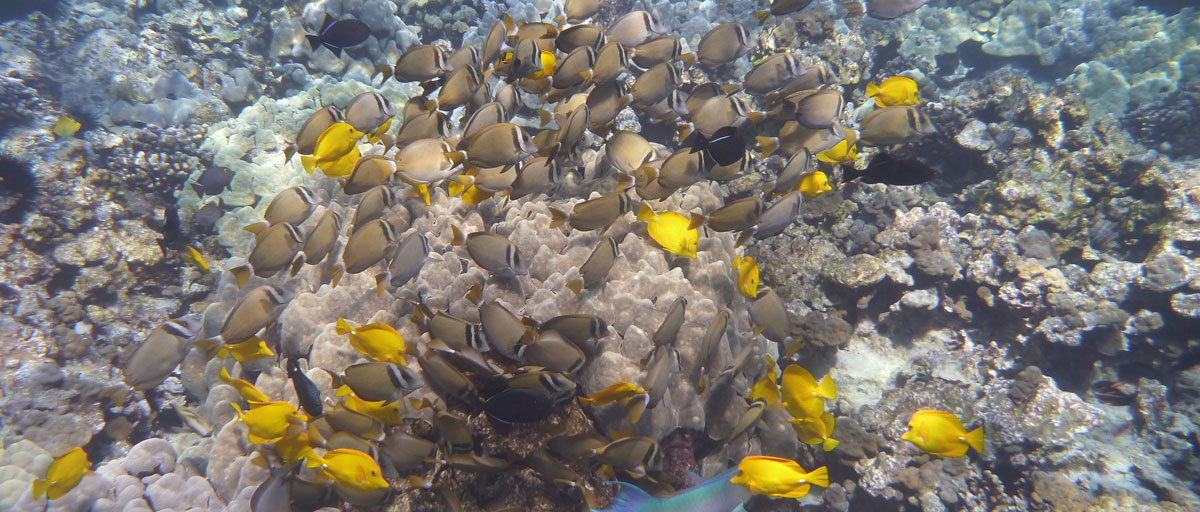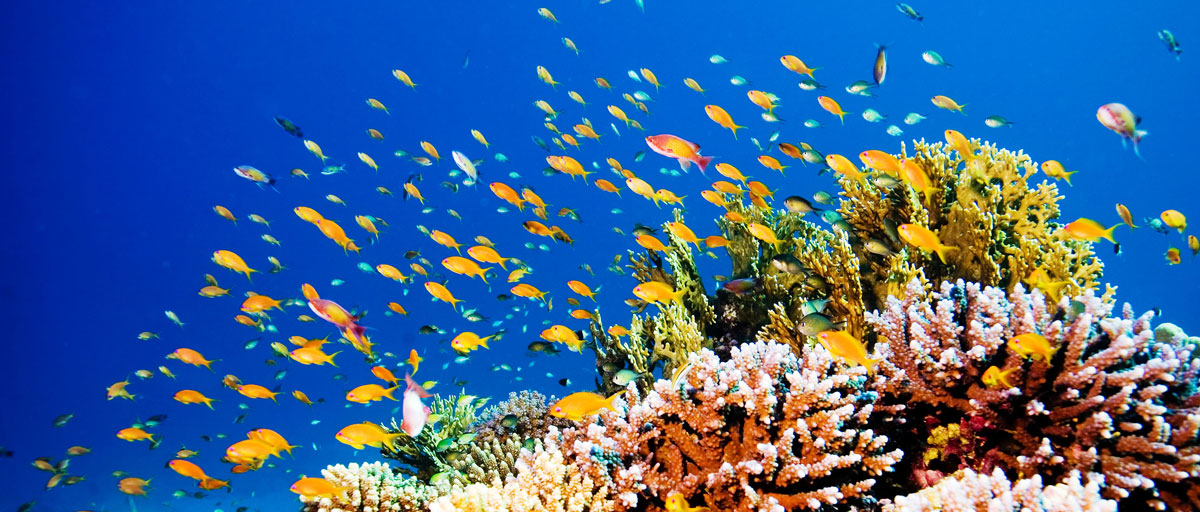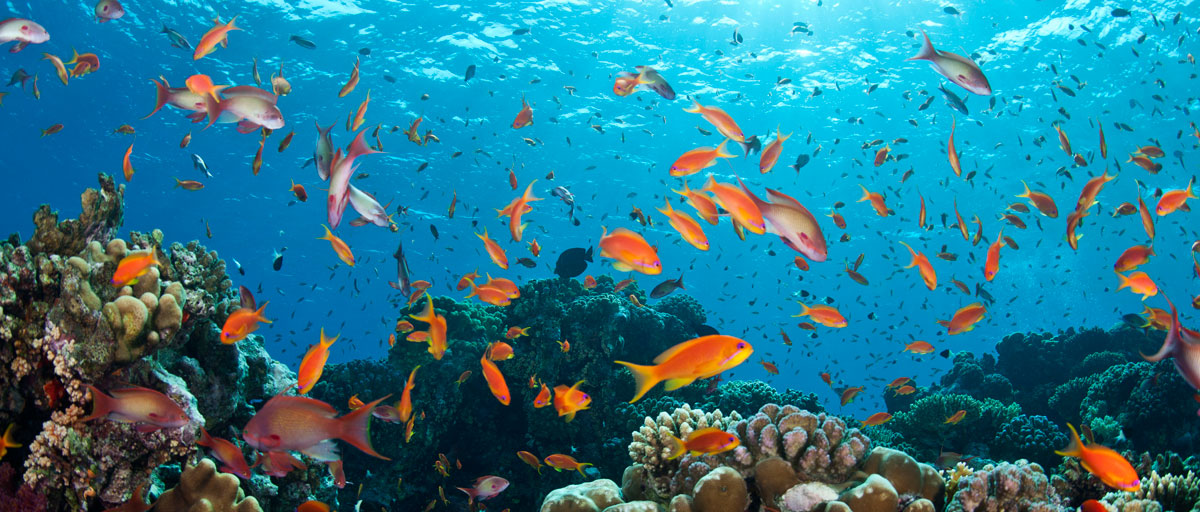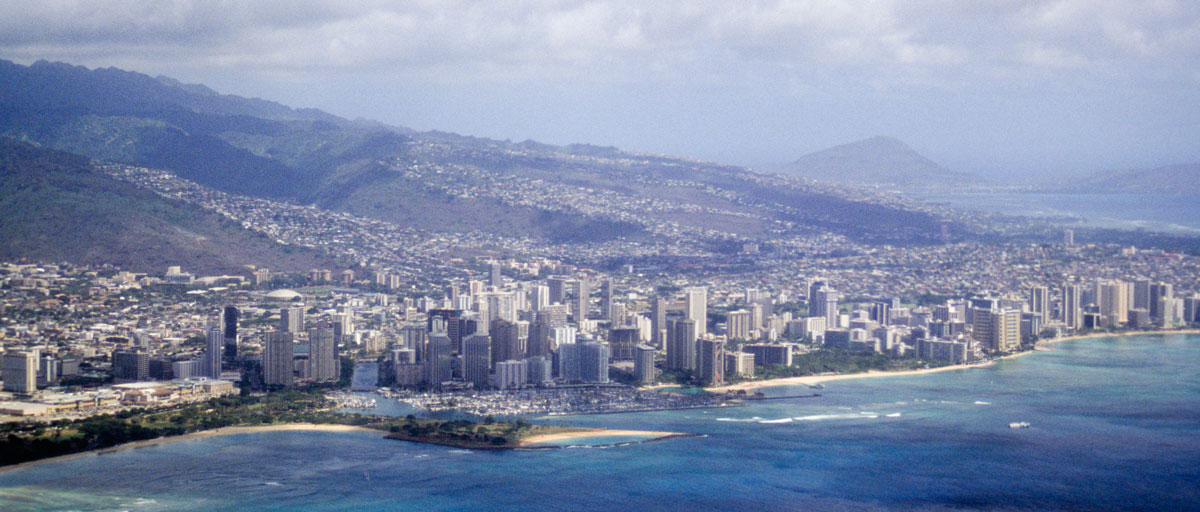
A major challenge for researchers and managers is to discern the relative importance of human versus biophysical influences to understand how a reef’s natural setting might limit or favour different management options. Now a new study turns to machine learning to answer this question. Photo: J.B Jouffray
Bildtext får vara max två rader text. Hela texten ska högerjusteras om den bara ska innehålla fotobyline! Photo: B. Christensen/Azote
coral reefs
Can big data help save shrinking Hawaiian reefs?
New study uses machine learning and an unprecedented dataset from more than six hundred reefs to analyse coral reef tipping points
- Understanding wave exposure and other natural variations can be crucial for coral reef managers when deciding where to allocate their limited resources
- New study takes a novel machine learning approach to analyse an exceptionally large and detailed dataset from the Hawaiian archipelago
- The study’s analytical approach can also guide effective conservation efforts in other ecosystems
Researchers and managers are grappling with how to save coral reefs around the world from warming seas, overfishing and other stresses. Increasingly, reefs go through major shifts, known as tipping points, which are hard to anticipate and tend to be very difficult to reverse.
A key challenge is to discern the relative importance of human versus biophysical influences to understand how a reef’s natural setting might limit or favour different management options.
Now a new study turns to machine learning to answer this question. An unprecedented compilation of human and environmental data across the Hawaiian archipelago made it possible.
The study was led by Jean-Baptiste Jouffray, a researcher from the centre and the partnering GEDB programme at the Royal Swedish Academy of Sciences.
Our study is foremost designed to better understand management options for Hawaiian coral reefs and their fish communities, but the analytical approach can also be replicated in other ecosystems to guide effective conservation efforts
Jean-Baptiste Jouffray, lead author
The study, which is published in the latest issue of Proceedings of the Royal Society - Biological Sciences, is the result of a joint effort by researchers from Sweden, USA and the UK. Their study is part of the international “Ocean Tipping Points” project bringing together experts from many fields, including natural and social scientists, law and policy experts, and managers.
Besides Jouffray and his centre colleagues Albert Norström and Magnus Nyström, the 15 other co-authors include researchers from Stanford University, University of Hawaii, Bangor University, National Geographic Society, Lancaster University, National Oceanic Atmospheric Administration (USA), University of California Santa Barbara, Conservation International, Arizona State University, and California Polytechnic State University.
Big data and advanced computer modeling
The researchers base their study on an exceptionally big dataset from the Hawaiian archipelago, including human and biophysical data from 620 survey sites. The data was fed into a set of “self-learning” algorithms and statistical computer models, known as boosted regression trees, to examine the occurrence of four different types of relatively stable ecosystem states (regimes as ecologists call them) that reefs can shift between.
This provided a novel approach to quantify the relative influence of human and environmental variables in shaping Hawaiian reef ecosystems.

Map of the study area from Jouffray et al. showing the location of 620 sites across the main Hawaiian Islands (Hawai’i, USA), categorized into four distinct reef regimes based on fish and benthic communities. Click on illustration to access interactive version of the map.
"Our findings provide empirical evidence that designing effective management interventions requires both focusing on prominent human drivers while accounting for the natural bounds set by the local biophysical environment," says co-author Magnus Nyström.
Interestingly, the occurrence of three out of the four examined coral reef regimes where best predicted by natural variation. Only the most degraded regime, characterized by low fish biomass, few corals and increased algae growth, was primarily predicted by human variables (i.e. fishing and nutrient run off). This confirms previous research highlighting that fishing and excess nutrient runoff can pave the way for algae to overgrow corals, both by promoting the competitive abilities of algae and by removing algae eating fish and other herbivores.
Determining the most cost-effective management
The study also highlights the role of wave exposure. When high it was shown to drive the occurrence of a specific regime characterized by high fish biomass but limited coral cover. In sheltered environments on the other hand, another regime with substantial coral cover was more common.
Understanding such natural variations can be crucial for coral reef managers when deciding where to allocate their limited resources and what management options to prioritize. Some regimes might simply be shaped by powerful natural biophysical drivers that supersede any human influence.
The new study provides additional evidence that managers should indeed focus on addressing fishing pressure and water quality to avoid degraded reef regimes, but the results can also help identify where undesirable regimes may be naturally occurring and, otherwise, determine the most cost-effective management actions.
"In the wake of the 2014–2016 coral bleaching event, the State of Hawai‘i pledged to effectively manage 30 per cent of its nearshore waters by 2030. Our analyses, together with our publicly available database, represent valuable resources to assist managers and policy-makers in this process," says Lisa Wedding, research associate at the Stanford Center for Ocean Solutions and paper co-author.
The authors end by reminding that, ultimately, addressing the challenges coral reefs are facing globally will also require dealing with drivers of change that lie far away from the local reef environment, such as trade and climate change.
"Only through a combination of local and global management interventions, can we ensure coral reefs continue to provide the ecosystem services upon which so many people rely," they conclude.
Methodology
The study is based on an analysis of the most spatially extensive dataset available across the Hawaiian archipelago, including 20 human and biophysical variables from 620 survey sites. A set of statistical computer models and “self-learning” algorithms were then used to analyse the relative influence of these human and natural variables in shaping four different types of reef regimes defined by both fish and benthic communities: Regime 1 (degraded reefs, i.e. low fish biomass, low hard coral cover and high algae cover); Regime 2 ( high fish biomass, high turf and macroalgae cover, and low hard coral cover); Regime 3 (high fish biomass and turf algae cover, no macroalgae and moderate hard coral cover); and Regime 4 (moderate fish biomass, less turf algae and higher hard coral cover). Click here for an interactive map showing the distribution of the four reef regimes throughout the Hawaiian archipelago
Jouffray J-B et al. 2019. Parsing human and biophysical drivers of coral reef regimes. Proc. R. Soc. B 286: 20182544. http://dx.doi.org/10.1098/rspb.2018.2544
Jean-Baptise Jouffray is a centre PhD student looking at cross-scales driver interactions in marine social-ecological systems
Magnus Nyström’s research explores resilience and cross-scale dynamics in marine ecosystems and coupled social-ecological systems at local and global scales
Albert Norström works across multiple projects focusing on coral reefs and their futures in the Anthropocene.











